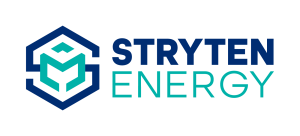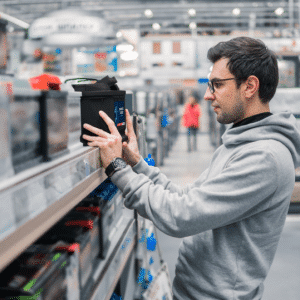There is an increasing need within the electric power industry for energy storage systems (ESS) capable of reliably and cost-effectively shifting the time between when renewable energy is generated and when it is used. More specifically, when solar generation exceeds demand during the day, and wind generation exceeds demand often at night, ESS are needed to charge with the excess renewable generation, store it, and then discharge during time periods when demand exceeds renewable generation. Those time periods are often 4-12 hours, and so the ESS must be able to discharge continuously for 4-12 hours. This is referred to as energy shifting. By 2030, over 60 percent of ESS installed in the U.S. are expected to provide energy shifting.
VRFB Is Well-Suited for Energy Shifting
The Department of Energy (DOE) has indicated that flow batteries particularly match up to the needs of long duration energy shifting because the discharge times from a few hours to a few days can be achieved simply by adjusting the electrolyte volume to meet the application’s needs. Vanadium redox flow batteries (VRFB) are a particularly attractive subset of flow batteries. Vanadium is an abundant element in the earth’s crust, making it highly available for use. VRFB systems support a near-infinite cycle life with proper maintenance and high capacity stability, lasting 30-40 years without the electrolyte losing energy storage capacity. With such a long lifespan, these battery systems can match the lifetime of the renewables they are paired with, thus providing a sustainable energy storage solution for on-demand power needs.
Another key benefit of VRFB is their ability to respond rapidly to calls for changing power. They can serve both short duration (power) and long duration (energy) applications with a single solution. Often referred to as stacked services, VRFB can support a wide range of applications from voltage support and frequency regulation to renewable integration in support of the next generation of clean, reliable, and resilient renewable based grid.
Costs for VRFB Need Improvement
The DOE recognizes that VRFB are well-suited for energy shifting, but they have also identified a range of cost improvements. Three main challenges are as follows:
- Inefficient and expensive manufacturing technologies. Components such as membranes, bipolar plates, and porous carbon electrodes require specialized properties and are currently expensive to produce. Auxiliary components such as pumps are also expensive to produce.
- Lack of robust, standardized supply chains (limited suppliers) and system integration challenges. Similar to other battery chemistries, the potential of flow battery systems is limited by non-standardized supply chains, which reduce the interoperability of individual manufacturing innovations that fit within a larger flow cell system. The current most common flow battery chemistry relies on vanadium, a material that is mainly imported. Therefore, supply chain constraints would inhibit market penetration if the demand for this chemistry grows.
- Challenges with manufacturing scale-up. Flow batteries have not yet achieved manufacturability levels that support deployment sufficient to provide broad economies of scale. Near-term advances for flow systems are focused on achieving comparable technical performance relative to incumbent Li-ion batteries; however, once systems are further developed and commercialized, scaling up manufacturing processes for specialized high performance components (such as membranes and storage tanks) and materials (such as the active electrolyte) will be extremely critical.
The Need for North American Manufacturing and Supply Chain
Currently, the supply chain and manufacturing of VRFB relies on material, component sources and production facilities outside of North America, sometimes in “unfriendly” countries. Therefore, there is a pressing need to build up the North America supply chain and manufacturing for VRFB. This is the case for key VRFB components such as vanadium electrolyte, cell stacks, and fit-for-purpose DC power electronics, pumps, tanks and AC inverters.
Vanadium electrolyte production is a key cost reduction target within the manufacturing scale-up challenge. This component typically constitutes 30 percent to 40 percent of the bill of materials cost for VRFB systems, for example $150/kWh of a $500/kWh VRFB installed system cost.
With up to 100 GW of long duration ESS projected to be needed for energy shifting in the U.S., the industry may soon need an electrolyte volume that is on par, or even substantially larger than the electrolyte used in the lead battery industry. Such potential production could easily constitute a market potential of tens of billions of dollars per year.
Given the volume and weight of electrolyte needed for VRFB to meet the energy shifting needs of the U.S., the cost and transportation emissions consequences if that vanadium electrolyte is manufactured offshore, and the total available market, it would be particularly valuable to have “midstream” vanadium electrolyte production in the U.S.
VRFB Can Leverage the Lead Battery Domestic Supply Chain
In response to this need and the production potential, the best practices and even possibly the existing lead battery infrastructure in the U.S. is well-suited to support the anticipated rapid growth of VRFB markets.
For instance, both vanadium and lead batteries have sulfuric acid and water as primary components. Whereas the lead battery receives its acid on a daily basis, the current vanadium electrolyte small volume practices typically use inefficient supply of raw materials and shipment of finished product in small batches.
Improved supply chain protocols, combined with the typical savings from economies of scale, are prime examples of how the best practices of the lead battery industry can help drive rapid cost down of the vanadium electrolyte to be more in line with market expectations for ESS systems costs.
The lead battery industry also has extensive vertically integrated capabilities from engineering to manufacturing to sales and marketing to operations and maintenance services, as well as its robust circular economy with 99 percent of the lead battery materials are recycled. As vanadium electrolyte production levels increase to meet demands, volumes could not only meet, but far exceed levels of the lead battery industry. Vanadium electrolyte suppliers will need to engage in similar practices.
The Future of Energy Storage
The United States is now confronting an inflection point concerning the growing demand for energy, increasing the stress on America’s transmission infrastructure. The nation’s goal is to create a carbon pollution-free power sector by 2035. It is projected that by 2050, almost 50 percent of total power generation will come from renewable energy sources.
A successful transition to clean energy requires pairing renewable energy generation with new long-duration energy storage technologies like VRFB that are rapidly scalable, domestically available, sustainable, safe and resilient.
Brian Berland, Senior Director, VRFB Products, Stryten Energy
Note: The information in this blog was drawn from Brian Berland’s paper titled North American Vertically-Integrated Supply Chain and Manufacturing for Medium-Duration Vanadium Redox Flow Batteries presented at Battcon 2023.







